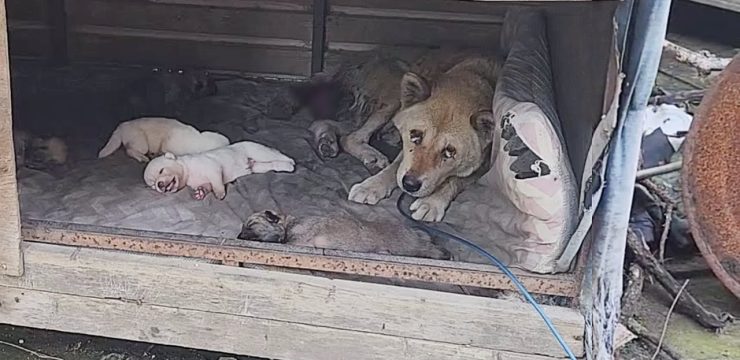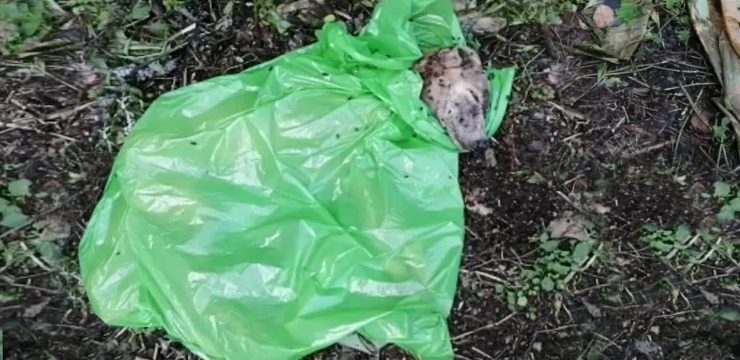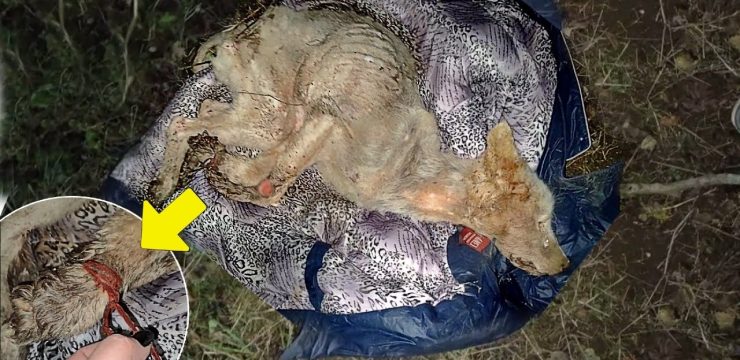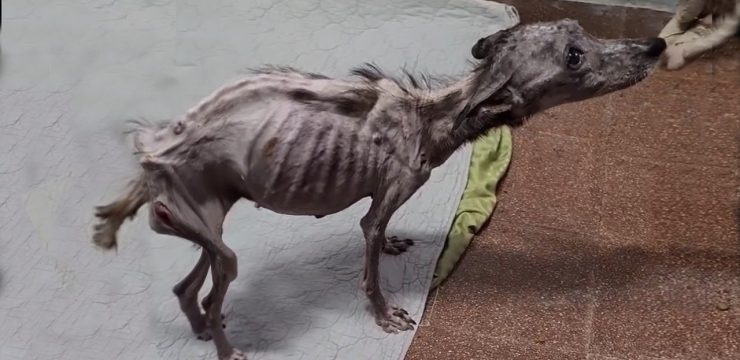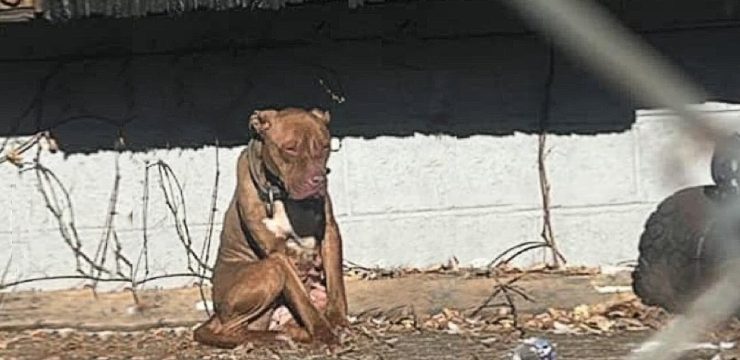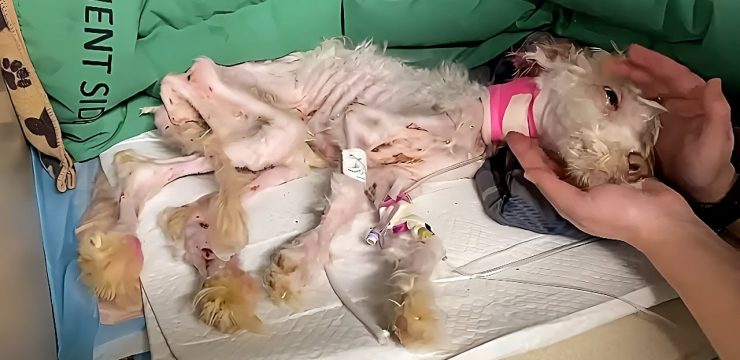The dog lay motionless on the sidewalk, a fragile form barely clinging to life. Its body was bruised and battered, its back legs completely still, swollen from trauma. The lower half of its body looked as though it had given up, weighed down by pain too great to bear. A gaping wound on its head, now crusted over with layers of old blood and scabs, told a silent story of suffering—of days, perhaps weeks, spent in agony without care or comfort.
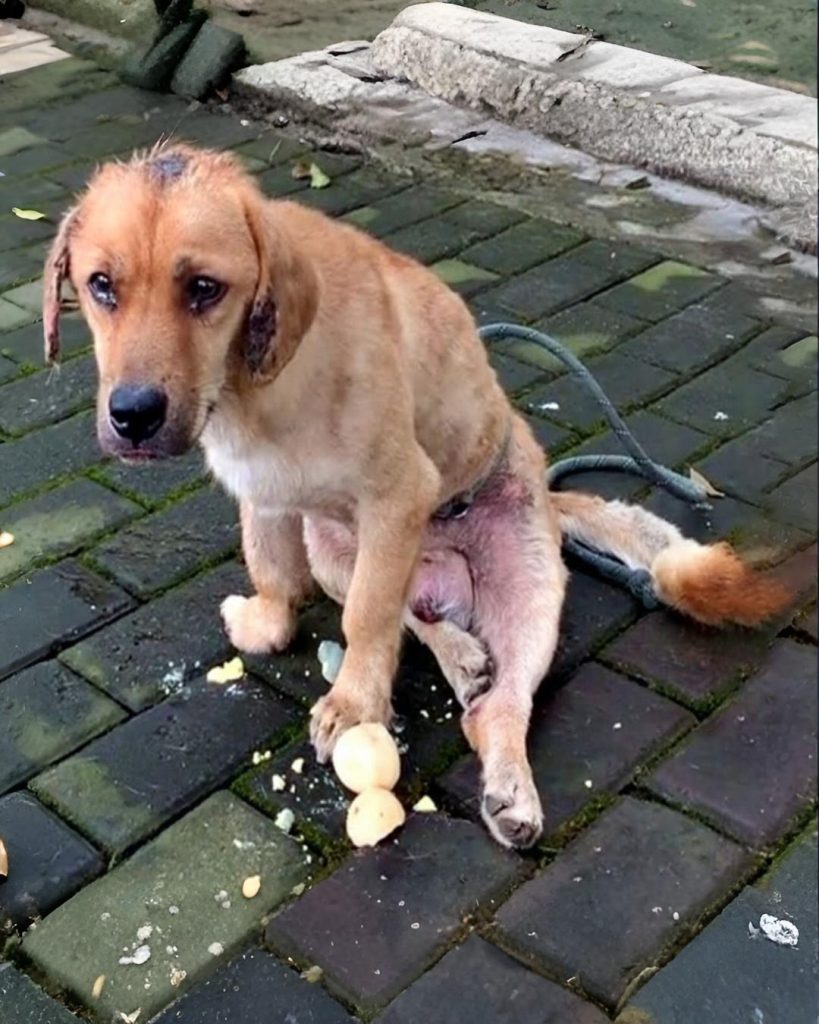
Though the dog didn’t cry out or whimper, its eyes told the truth. In those eyes was a depth of pain that words could never express—eyes filled with sorrow, fear, and the shimmer of unshed tears. It didn’t beg, it didn’t bark. It just looked, and in that look was a silent plea. Most people hurried by, too busy or indifferent to notice. But I couldn’t turn away. Something in those eyes reached into my heart and gripped it with a force I couldn’t ignore.
There was a quiet desperation in its gaze, as if it was calling out, begging without sound: “Please, someone see me. Someone help me.” I found myself walking toward it before my brain could catch up with my heart. I crouched down slowly, not wanting to scare the poor thing. I spoke in whispers, trying to soothe the tremble I saw in its body. It flinched slightly at the sound of my voice, torn between fear and the flicker of hope. It didn’t run—perhaps it couldn’t—but it also didn’t turn away. There was something in its stare that said it was trying to decide whether it could trust me.
I didn’t know where it had come from or what horrors it had faced, but I knew one thing clearly: if someone didn’t intervene soon, this dog wouldn’t make it. I hurried back to my car, pulled out a soft blanket from the back seat, and returned. Carefully, I wrapped the blanket around its body. The dog whimpered, a low sound that broke my heart, but it didn’t fight. I lifted it gently into my arms and was shocked by how heavy it felt—more than I expected, perhaps from the swelling, or maybe it was the weight of its suffering. It shook in my arms, but as we sat together in the car, it leaned its head against my chest, resting. It was the first sign that maybe, just maybe, it was willing to believe in the kindness of a stranger.
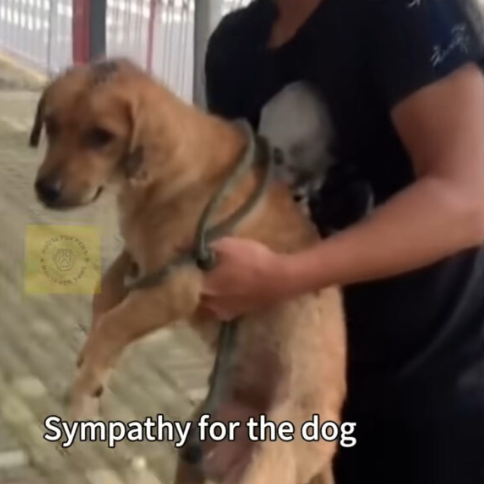
The veterinary clinic welcomed us without question. The examination was thorough and grim. The dog had suffered serious spinal trauma. Its hind legs were completely paralyzed, and the head wound was infected, dangerously so. The vet spoke softly, with compassion, outlining the treatment plan and possible outcomes. Despite the extent of the injuries, there was hope. With proper care, medication, and time, the dog could live—not just survive, but live meaningfully. It wouldn’t walk again on its own, but it could still lead a life full of love and movement with the help of a special wheelchair.
Relief and gratitude washed over me. There was a path forward. There was a chance for healing. I didn’t know yet how long the road would be, but I knew we would walk—or roll—it together.
Days blended into weeks. Each day brought new challenges, but also new signs of progress. The swelling in its lower body slowly decreased. The infection responded to treatment, and the deep wound on its head began to close, replaced by healthy new skin. But more than the physical healing, something deeper was happening—the dog was learning to trust. At first, it watched me warily from the corner of the room. But over time, its eyes softened. It started greeting me with a tail twitch, then a tail wag, and eventually, a joyful bark.
The first time we placed it into its custom-made wheelchair, the dog froze. Its front paws moved hesitantly, unsure. Then, slowly, it began to wheel forward. One step, two steps—and then, to everyone’s delight, its tail began to wag furiously. It wheeled in a circle, barking happily. That moment wasn’t just a victory of mobility; it was a rebirth. This was no longer a dog waiting to die. This was a dog rediscovering life.
When the time came to bring it home, I wasn’t sure how it would adjust. But it took to its new life with surprising ease. It roamed the yard in its wheels, sniffing the grass, exploring corners, chasing butterflies as best it could. It claimed a spot by the window, watching the world go by. It barked at squirrels, wagged at delivery drivers, and followed me from room to room like a shadow.
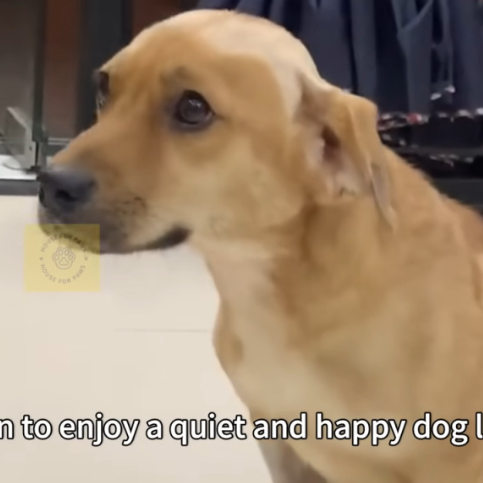
The physical scars would never disappear. The limp body, the wheeled legs, and the faint scar on its head would always be a part of it. But the light in its eyes was different now. No longer hollow and pained, those eyes sparkled with joy, curiosity, and peace. The transformation wasn’t just physical—it was spiritual. This dog, once broken and discarded, had become whole again through love.
Looking back, I’m reminded of something deeply true: every life matters. Every being, no matter how small or broken, deserves a chance to be seen, to be loved, to be given hope. This dog—abandoned, injured, and forgotten—didn’t just survive. It found joy. It found purpose. And it taught me more about courage, resilience, and the healing power of compassion than I could ever have imagined.
Today, that same dog races down the path in the park, wheels spinning, ears flying in the wind, heart wide open. And every time someone stops to smile, to pet, to ask about the story behind the wheels, I tell them. Because stories like this remind us that kindness matters. Love heals. And sometimes, saving a life ends up saving your own.
